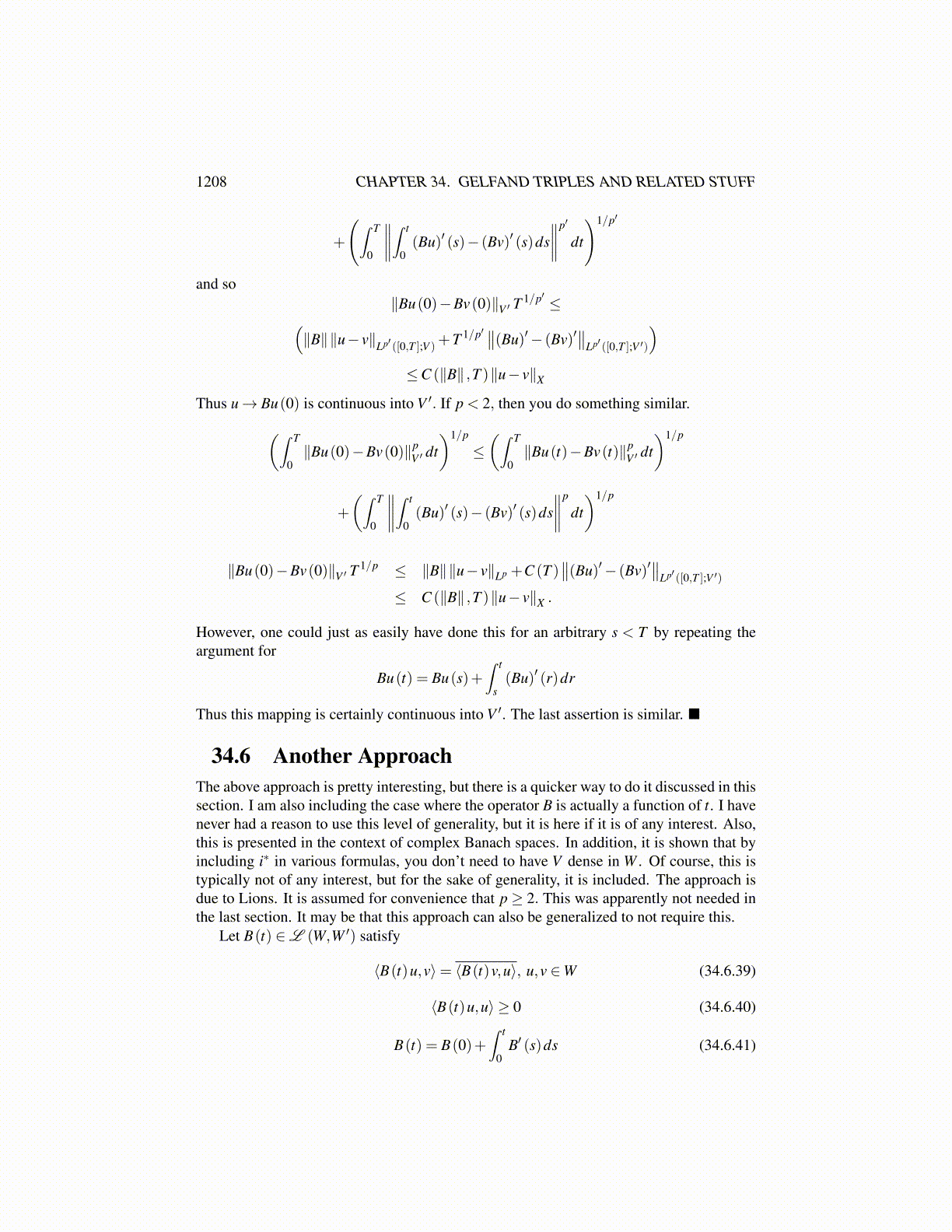
1208 CHAPTER 34. GELFAND TRIPLES AND RELATED STUFF
+
(∫ T
0
∥∥∥∥∫ t
0(Bu)′ (s)− (Bv)′ (s)ds
∥∥∥∥p′
dt
)1/p′
and so∥Bu(0)−Bv(0)∥V ′ T
1/p′ ≤(∥B∥∥u− v∥Lp′ ([0,T ];V )
+T 1/p′ ∥∥(Bu)′− (Bv)′∥∥
Lp′ ([0,T ];V ′)
)≤C (∥B∥ ,T )∥u− v∥X
Thus u→ Bu(0) is continuous into V ′. If p < 2, then you do something similar.(∫ T
0∥Bu(0)−Bv(0)∥p
V ′ dt)1/p
≤(∫ T
0∥Bu(t)−Bv(t)∥p
V ′ dt)1/p
+
(∫ T
0
∥∥∥∥∫ t
0(Bu)′ (s)− (Bv)′ (s)ds
∥∥∥∥p
dt)1/p
∥Bu(0)−Bv(0)∥V ′ T1/p ≤ ∥B∥∥u− v∥Lp +C (T )
∥∥(Bu)′− (Bv)′∥∥
Lp′ ([0,T ];V ′)
≤ C (∥B∥ ,T )∥u− v∥X .
However, one could just as easily have done this for an arbitrary s < T by repeating theargument for
Bu(t) = Bu(s)+∫ t
s(Bu)′ (r)dr
Thus this mapping is certainly continuous into V ′. The last assertion is similar.
34.6 Another ApproachThe above approach is pretty interesting, but there is a quicker way to do it discussed in thissection. I am also including the case where the operator B is actually a function of t. I havenever had a reason to use this level of generality, but it is here if it is of any interest. Also,this is presented in the context of complex Banach spaces. In addition, it is shown that byincluding i∗ in various formulas, you don’t need to have V dense in W . Of course, this istypically not of any interest, but for the sake of generality, it is included. The approach isdue to Lions. It is assumed for convenience that p≥ 2. This was apparently not needed inthe last section. It may be that this approach can also be generalized to not require this.
Let B(t) ∈L (W,W ′) satisfy
⟨B(t)u,v⟩= ⟨B(t)v,u⟩, u,v ∈W (34.6.39)
⟨B(t)u,u⟩ ≥ 0 (34.6.40)
B(t) = B(0)+∫ t
0B′ (s)ds (34.6.41)